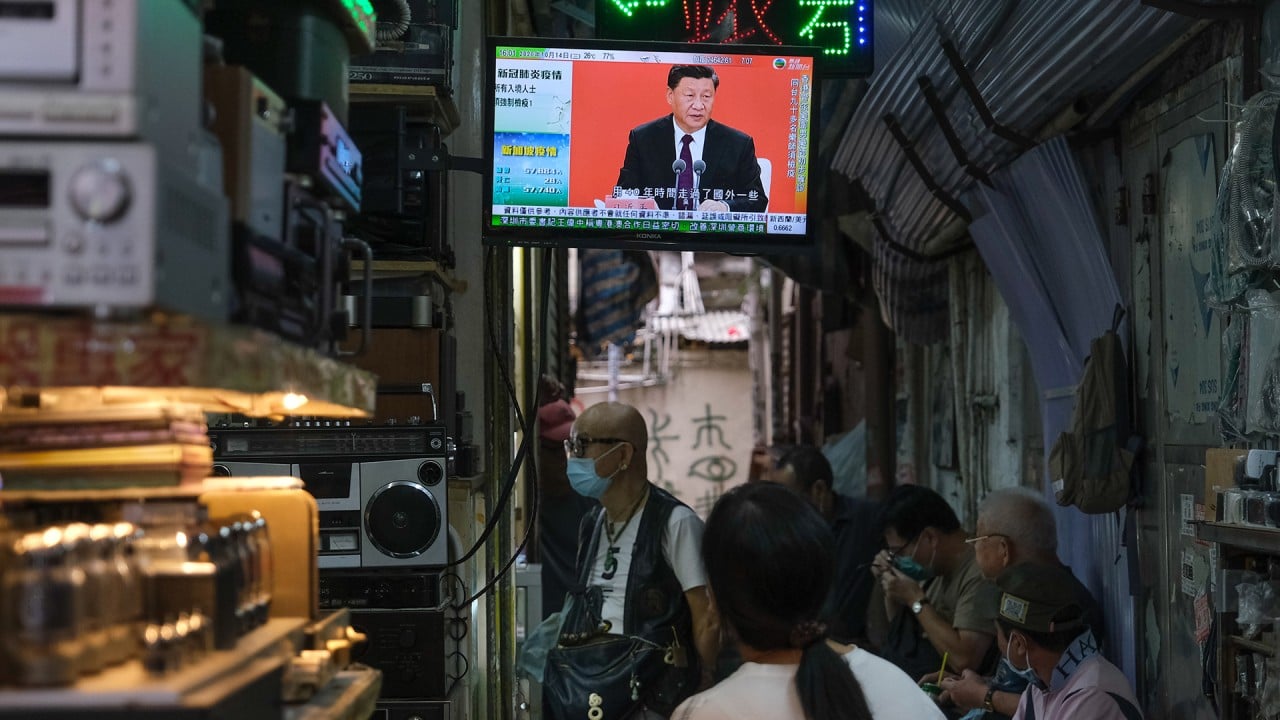
China’s foreign exchange reserves have been remarkably stable. Puzzled economists wonder why
- China’s reserve assets held in foreign currencies, the world’s largest war chest, have been stuck between US$3.0 trillion and US$3.2 trillion since 2017
- Some economists say China may be using a new tactic to manage the yuan’s exchange rate by allowing bigger capital outflows from the country
China’s foreign exchange reserves have shown surprisingly little change in recent years despite volatile economic conditions and exchange rates among its major trading partners.
China’s reserve assets held in foreign currencies, the world’s largest war chest, have been stuck between US$3 trillion and US$3.2 trillion since 2017 because the People’s Bank of China (PBOC) appears to have largely stopped using them in market intervention to manage the yuan’s value.
“We will continue to refrain from routine intervention in the foreign exchange market and let market supply and demand determine the exchange rate level,” the official Xinhua news service said last week. “Efforts are being made to create conditions for the steady realisation of a ‘clean floating’ RMB exchange rate.”
Economists have been left pondering several puzzling questions: Why is the yuan not rising more sharply on strong buying demand as China’s economy snaps back from the coronavirus pandemic and foreign investors buy mainland securities to take advantage of attractive returns? Is Beijing suppressing the strength of the yuan through intervention? And if so, why has the amount of foreign exchange reserves not grown as a result?
China accumulated foreign reserves for decades until they reached an all-time high of US$3.99 trillion in 2014, as the PBOC bought US dollars that Chinese exporters accumulated through foreign sales, holding down the value of the yuan.
This foreign exchange intervention meant the PBOC printed a lot of money that was then handed over to domestic commercial banks who had bought US dollars from exporters.
This new strategy would allow the PBOC to disguise some of its reserves by holding them off-balance-sheet so the official reserves figure continues to look relatively steady each month, while assets valued in foreign currencies are rising dramatically in the state banking system.

01:47
China GDP: economy grew by 4.9 per cent in third quarter of 2020
What is known is that Chinese state banks are moving a portion of the nation’s savings to foreign markets, although the precise mechanism of how banks have financed the rise in foreign assets remains a mystery, other than that domestic foreign currency deposits may have been used as a source of funds, analysts say.
“China appears to have made a policy decision to keep the reported reserves on the PBOC’s balance sheet basically stable, even though China continues to manage its currency and aims to keep its currency broadly stable,” said Brad Setser, former staff economist at the US Department of the Treasury, said in an emailed interview with the South China Morning Post.
“One consequence of that decision is that shifts in the trade balance and patterns of capital flows increasingly appear on the balance sheet of the state banks,” said Setser, who is now senior fellow for international economics at the Council on Foreign Relations.
Setser calculated that China’s official net foreign asset expansion in the second quarter consisted of the PBOC’s addition of about US$30 billion to its reserves, while state banks’ net foreign asset position increased by US$50 billion through trade, and another US$15 billion through foreign bond purchases.
On top of that, Chinese investors, mostly state entities, bought US$10 billion of foreign equities and private Chinese investors moved another US$75 billion out of China through ways that the government cannot fully explain.
In addition, equity and bond portfolio inflows by foreign investors stood at about US$65 billion.

05:27
China must rely on its ‘internal market for innovation’, says sociology Prof Lau Siu Kai
China’s current account surplus – the balance of imports and exports of goods and services – has risen sharply this year because of the nation’s strong export performance.
The surplus jumped to US$119.6 billion in the second quarter, the highest surplus since the record of US$133.1 billion in the fourth quarter of 2008 at the start of the global financial crisis.
China is poised for similar current account surpluses until a Covid-19 vaccine becomes globally available, meaning state banks and state investors would need to offset the increasing capital inflows with bigger, and more persistent outflows to rein in the yuan’s appreciation, analysts said.
In a loosening policy measure to allow Chinese institutions to invest more money in foreign capital markets, the State Administration of Foreign Exchange this week announced the expansion of its Qualified Domestic Institutional Investor annual quota by US$10 billion. The agency issued US$3.36 billion of new quotas last month, the first increase in a year and a half.
We think that the current account surplus this year and potentially next year will still stay wider than was the case in 2018-19
Wang Ju, senior currency strategist at HSBC global research, said that Chinese banks wanted to diversify their portfolio investments into overseas financial markets as regulators loosen investment restrictions, with most outflows invested in stocks of Chinese companies listed in Hong Kong and bonds issued offshore by China corporations.
Conversely, such asset acquisition outflows could occasionally reverse into temporary inflows to support the yuan during bouts of market volatility, Wang said.
“We think that the current account surplus this year and potentially next year will still stay wider than was the case in 2018-19,” Wang said. “If the pace of the yuan appreciation becomes too rapid, authorities may open up more outbound investment channels.”

